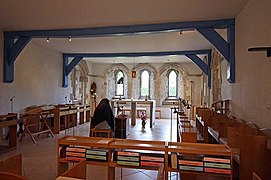
Stowe is a civil parish and former village about two miles northwest of Buckingham in the unitary authority area of Buckinghamshire, England. The parish includes the hamlets of Boycott, Dadford and Lamport.

Burnham is a large village and civil parish that lies north of the River Thames in Buckinghamshire, between the towns of Maidenhead and Slough, about 24 miles west of Charing Cross, London. It is probably best known for the nearby Burnham Beeches woodland.

Syon Abbey, also called simply Syon, was a dual monastery of men and women of the Bridgettine Order, although it only ever had abbesses during its existence. It was founded in 1415 and stood, until its demolition in the 16th century, on the left (northern) bank of the River Thames within the parish of Isleworth, in the county of Middlesex, on or near the site of the present Georgian mansion of Syon House, today in the London Borough of Hounslow. It was named after the biblical holy "City of David which is Zion", built on the eponymous Mount Zion.
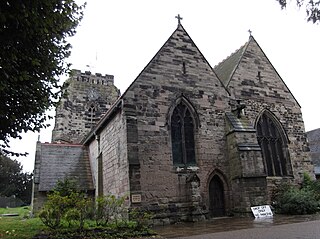
Polesworth Abbey was a Benedictine nunnery in Polesworth, North Warwickshire, England.
St Neots Priory was a Benedictine monastery beside the town of St Neots in the historic county of Huntingdonshire, now a non-metropolitan district in the English county of Cambridgeshire.
St Mary's Abbey, also known as Malling Abbey, is an abbey of Anglican Benedictine nuns located in West Malling, Kent, England. It was founded around 1090 by Gundulf, Bishop of Rochester and dissolved in 1538. The site became a monastery again in the late 19th century.
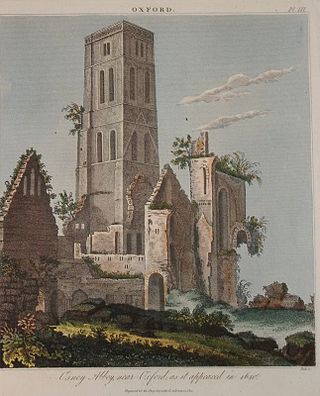
Osney Abbey or Oseney Abbey, later Osney Cathedral, was a house of Augustinian canons at Osney in Oxfordshire. The site is south of the modern Botley Road, down Mill Street by Osney Cemetery, next to the railway line just south of Oxford station. It was founded as a priory in 1129, becoming an abbey around 1154. It was dissolved in 1539 but was created a cathedral, the last abbot Robert King becoming the first Bishop of Oxford. The see was transferred to the new foundation of Christ Church in 1545 and the building fell into ruin. It was one of the four renowned monastic houses of medieval Oxford, along with St Frideswide's Priory, Rewley and Godstow.

Barking Abbey is a former royal monastery located in Barking, in the London Borough of Barking and Dagenham. It has been described as having been "one of the most important nunneries in the country".

Ashridge Priory was a medieval college of Austin canons called variously the "Brothers of Penitence" or the "Boni Homines". It was founded by Edmund of Almain in 1283 who donated, among other things, a phial of Christ's blood to the abbey. It was granted to Mary Tudor, Queen of France and later became the private residence of the future queen Elizabeth I. It was acquired by Sir Thomas Egerton in 1604 and then passed down to the Duke of Bridgewater before being demolished.

Elstow Abbey was a monastery for Benedictine nuns in Elstow, Bedfordshire, England. It was founded c.1075 by Judith, Countess of Huntingdon, a niece of William the Conqueror, and therefore is classed as a royal foundation.
Amesbury Abbey was a Benedictine abbey of women at Amesbury in Wiltshire, England, founded by Queen Ælfthryth in about the year 979 on what may have been the site of an earlier monastery. The abbey was dissolved in 1177 by Henry II, who founded in its place a house of the Order of Fontevraud, known as Amesbury Priory.
Amesbury Priory was a Benedictine monastery at Amesbury in Wiltshire, England, belonging to the Order of Fontevraud. It was founded in 1177 to replace the earlier Amesbury Abbey, a Saxon foundation established about the year 979. The Anglo-Norman Amesbury Priory was disbanded at the Dissolution of the monasteries and ceased to exist as a monastic house in 1539.
St. Mary's Abbey, also known as the Nunnaminster, was a Benedictine nunnery in Winchester, Hampshire, England. It was founded between 899 and 902 by Alfred the Great's widow Ealhswith, who was described as the 'builder' of the Nunnaminster in the New Minster Liber Vitae. The first buildings were completed by their son, Edward the Elder. Among the house's early members was Edward's daughter Edburga.

Cecily Bodenham was the last abbess of Wilton Abbey. Her tenure as abbess was from 1534 to 25 March 1539, when she surrendered the abbey to the commissioners of King Henry VIII of England during the Dissolution of the Monasteries. She received a generous pension and a property at Fovant, where she retired with about ten of the nuns from Wilton.
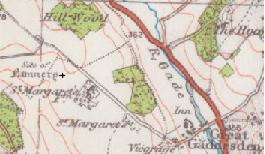
St Margaret's Convent was a convent of the Benedictine order near Great Gaddesden in Hertfordshire, England. Founded in 1160, it was abolished as a consequence of King Henry VIII's dissolution of the monasteries in the 1530s. It was also known as The Priory of Ivinghoe, St. Margaret's, in the Wood and Muresley Priory.

Nuneaton Priory was a medieval Benedictine monastic house in Nuneaton, Warwickshire, England. It was founded as a daughter house of the Order of Fontevraud in 1153.
Alice Baldwin was the last Abbess of Burnham Abbey near Burnham, Buckinghamshire. She was the daughter of Sir John Baldwin, Chief Justice of the Common Pleas.

Lacock Abbey was a monastery founded at Lacock, in the county of Wiltshire in England, in the early 13th century by Ela, Countess of Salisbury, as a house of Augustinian Canonesses regular. It was seized by the crown in 1539 during the Dissolution of the Monasteries under Henry VIII. It then became a country house, Lacock Abbey, notable as the site of Henry Fox Talbot's early experiments in photography.
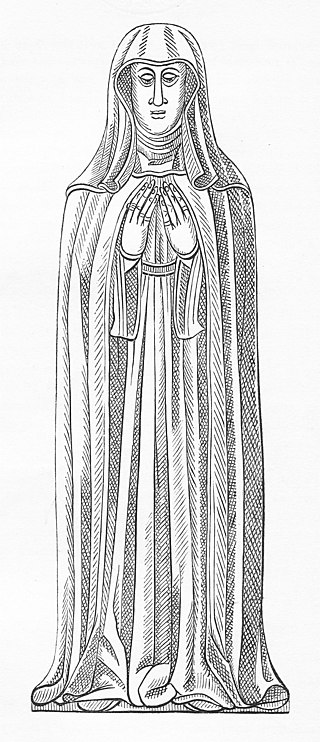
Agnes Jordan was the last pre-reformation Abbess of Syon Monastery. It was she who had to sign the deed of surrender on 25 November 1539 which brought to an abrupt end the life of the abbey and granted all its property and wealth to Henry VIII. She was the sister of Isabel Jordan, prioress and later abbess of Wilton Abbey.




